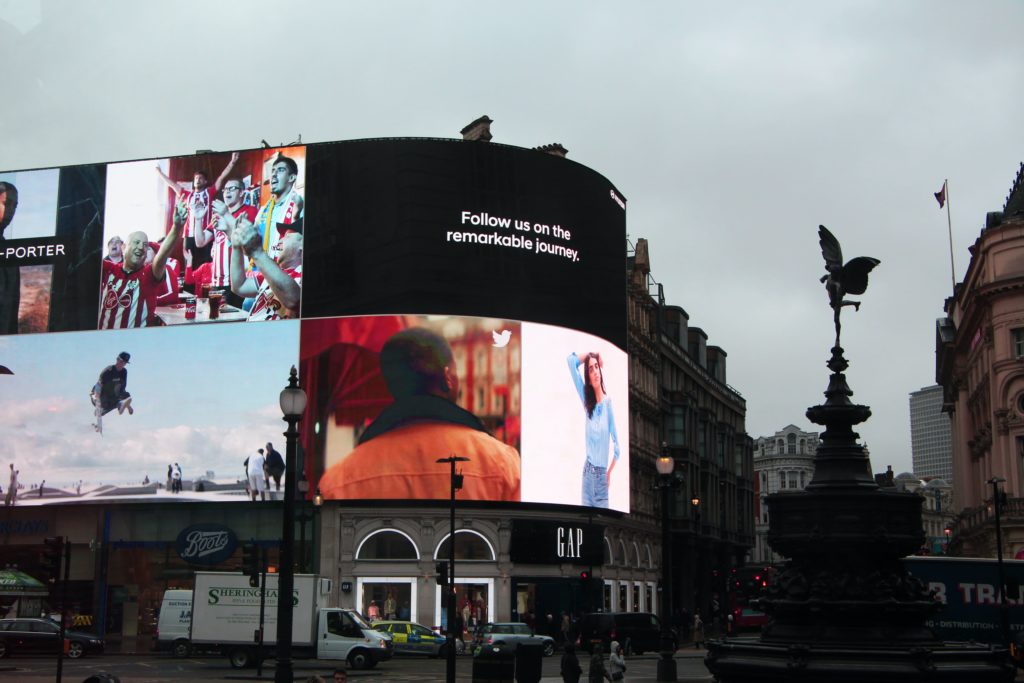Why programmatic DOOH is on the rise
2021 features stints of working from home, periods of lockdown, and screen fatigue for many of us. This is causing a shift in consumer behaviour as more people attentively turn to the outdoors for a change of scene and means that marketers will likely benefit from the inclusion of out-of-home (OOH) advertising in their media strategies.

One of the oldest advertising channels, OOH is experiencing its own transformation by going digital and is now included within the programmatic landscape (pDOOH). It’s a perfect pairing which offers data driven, premium impressions, within a physical location. This creates a myriad of opportunities for marketers to reach audiences outside their homes and away from screens. Yet, it still offers relevant messaging and targeting. pDOOH adverts can be purchased online, quickly updated, and can respond to external factors while maximising ad effectiveness.
How does programmatic improve DOOH for brands?
If there is anything 2020 taught us, it’s that circumstances can change quickly, and the ability to update campaign creative or revise your advertising location is essential. Programmatic elements can be applied in the form of data sets which can trigger changes to your campaign creative. This could simply be the time of day, weather, or more granular such as mobile location data.
Imagine you are a food company that would like to promote different meals at different times of the day depending on the temperature. These data sets could programmatically trigger different creatives, showing a refreshing salad for lunch on a warm day, or a piping hot stew on a cold evening. Consumers want their needs to be reflected in advertising, and by including contextually relevant messaging you can expect an uplift in campaign effectiveness while protecting your brand image. The more triggers which are used, the more endless possibilities.
pDOOH also enables numerous channels to be monitored in one platform. Budgets can be fluid and easily reallocated to other media channels when based on performance. This increased flexibility has lowered the minimum spend, so this high-reach channel can now be utilised by small, local businesses to increase brand awareness or drive traffic to their closest store.
Why should brands pay attention to pDOOH?
pDOOH can be applied anywhere in the customer journey. A pDOOH ad might initially feature a broad brand message to increase awareness, before using a more targeted approach with unique selling points, tailored product recommendations, and nearest store recommendations across multiple channels. This presents new opportunities for cross-channel amplification and omnichannel marketing.
How can you measure the effectiveness of pDOOH?
OOH can be seen by more than one person at a time so it can be tricky to measure how many people have seen your ad. However, impression multipliers can be used with location data and visual sensors to accurately count impressions. This provides a snapshot of the persons’ demographics, engagement, and movement around displays which can inform future campaign decisions. For example, dwell time might indicate how long a future campaign should run for or its repetition, giving the campaign the best opportunity to reach a wider audience.
As OOH moved to digital, tracking and reporting vastly improved. A device id that travelled near the DOOH location and into the store can be attributed to increased footfall and average conversion rates. The performance of a DOOH campaign can also be tracked through promo codes or comparing KPIs before and after the launch.
What is the easiest way to use pDOOH?
- For a quick start, reformat existing creative content from current digital campaigns. You may want to add some contextual messaging for specific store locations.
- Work with a demand side platform (DSP) that supports pDOOH to get your campaign out in front of your audience. A DSP gives you a centralised point to see all your programmatic outreach in one place.
- Start with a smaller budget and research your preferred bidding style. Open real-time bidding may be a good place to start as it is accessible without needing to have an existing relationship with the media owner. This gives you more flexibility to change locations and show your advert in peak times when it’s more likely to be seen by your target audience.
- Consider using current data sources to drive a more targeted approach. This may be mobile data of your current database which can be used to re-target recent visitors to your website or social media platforms.
The adaptiveness of programmatic is finding its place in one of the longest standing advertising channels and we can’t wait to see how pDOOH continues to grow. Get in touch with our digital performance team if you would like to reach your audience with this evolving channel.